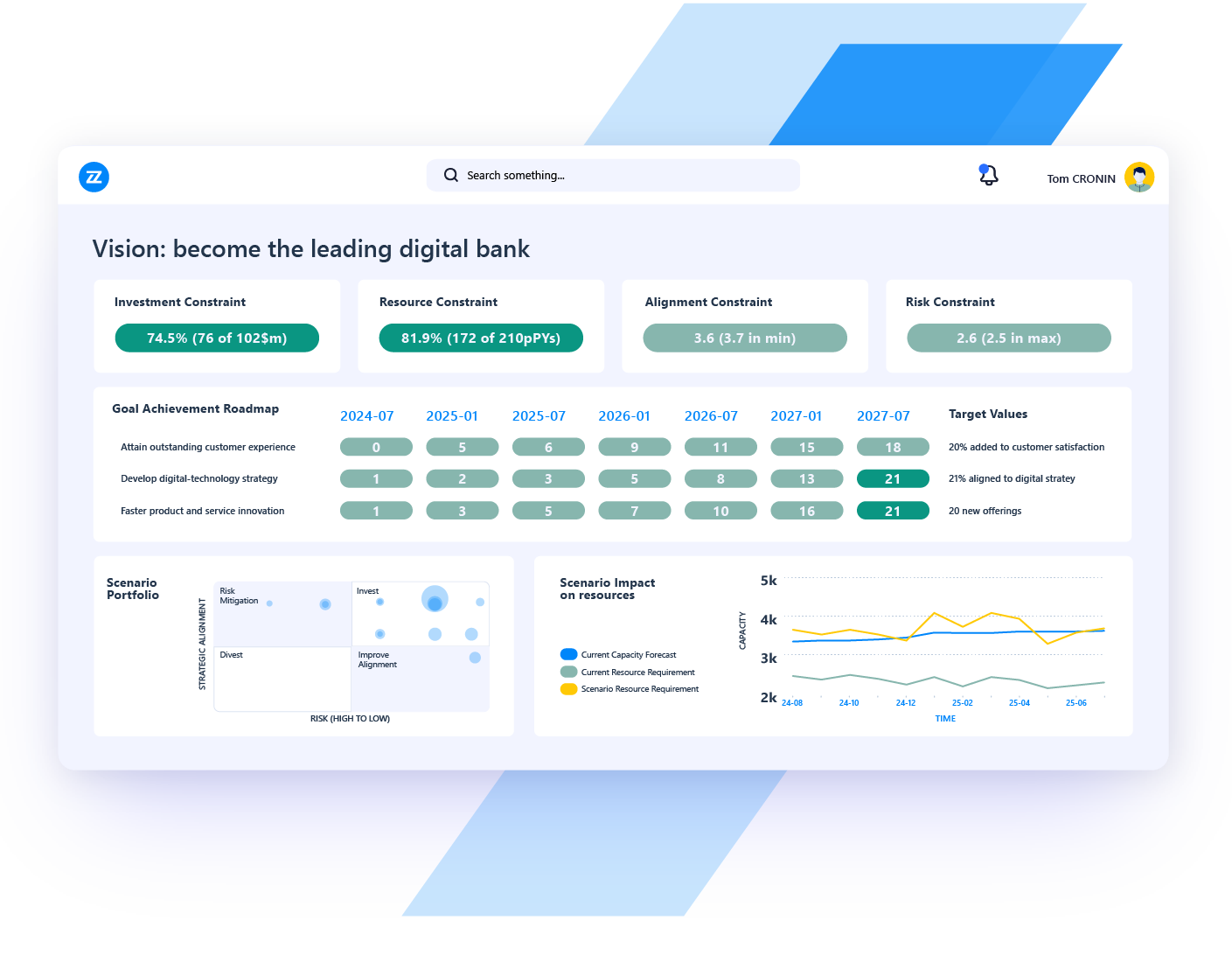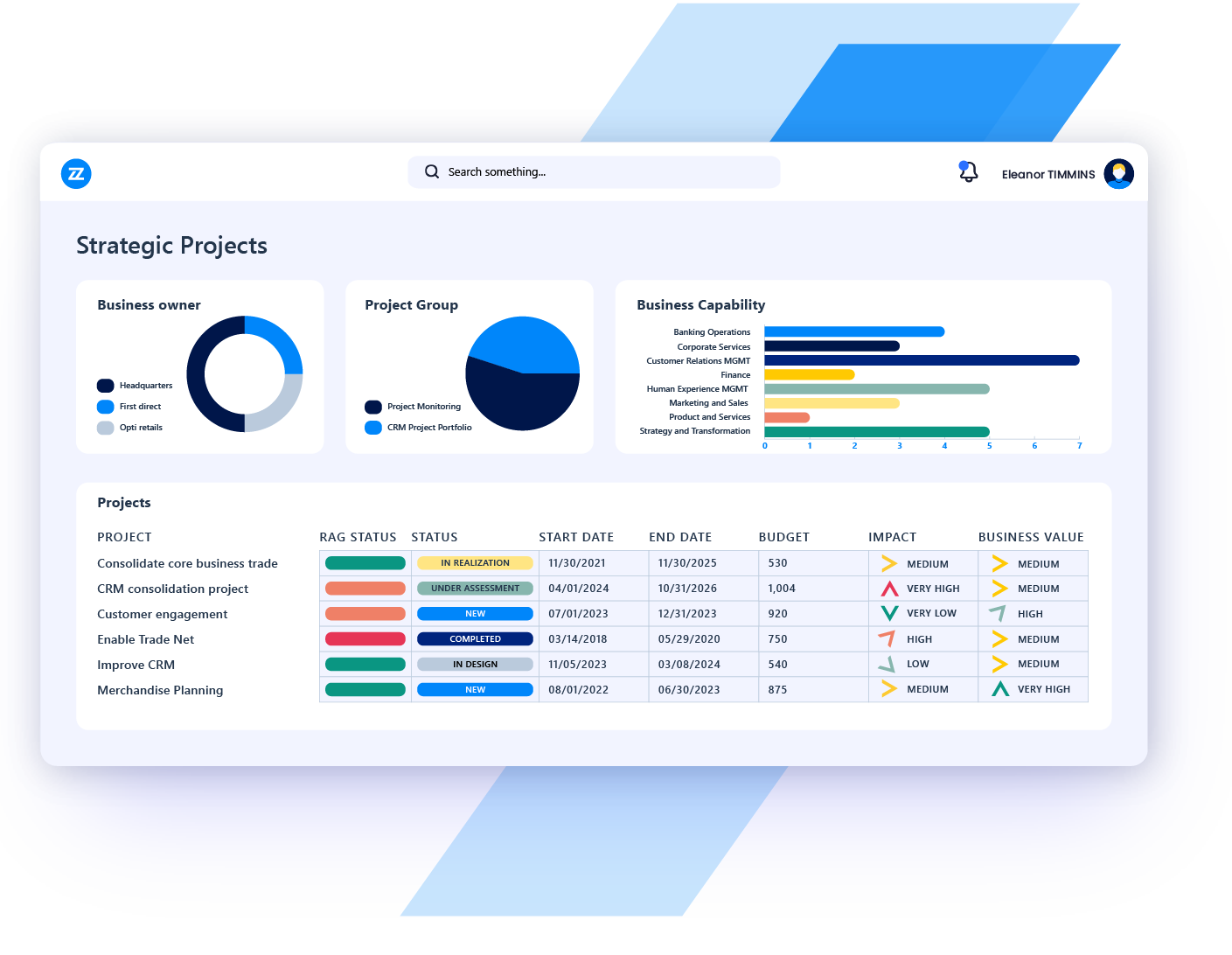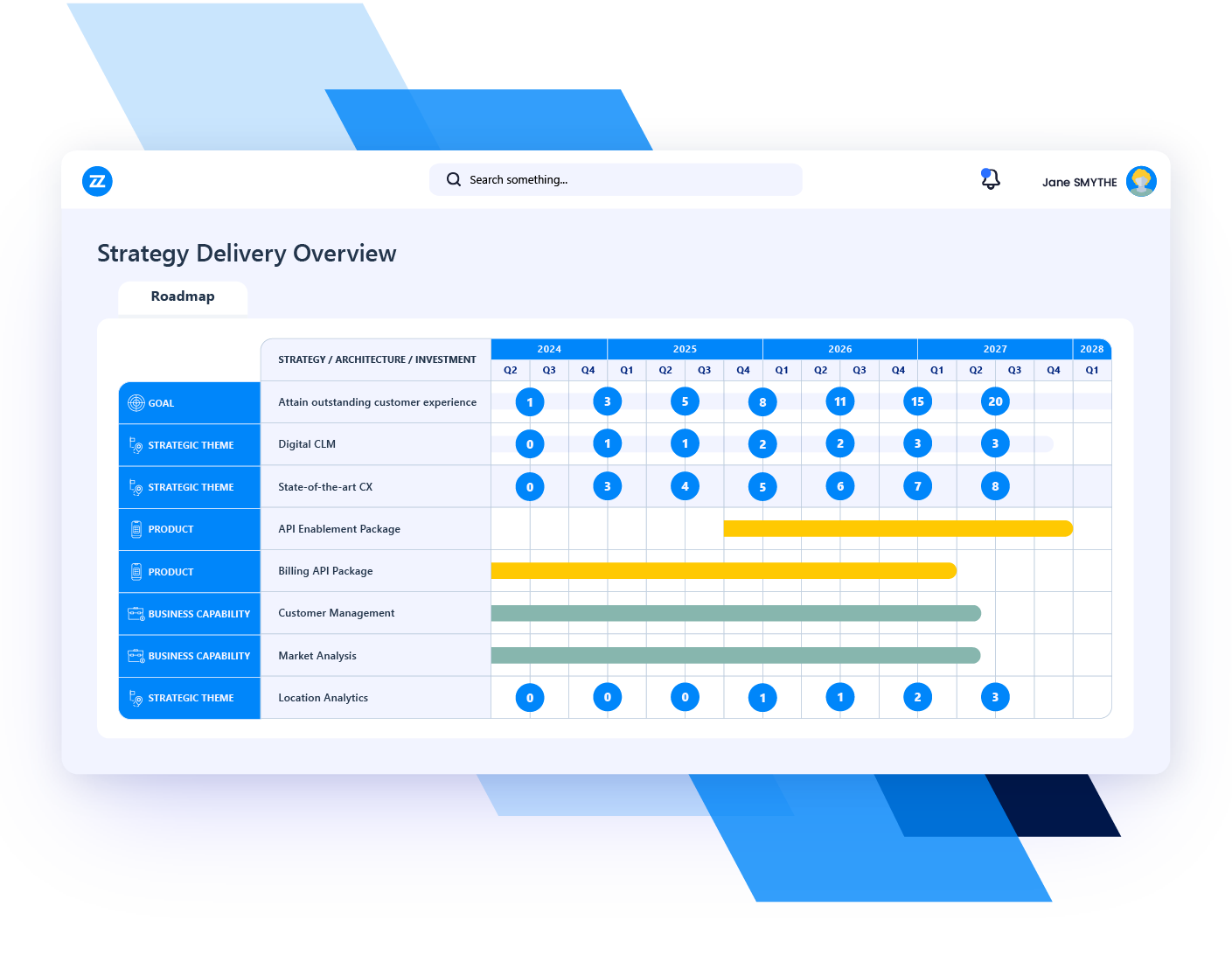Strategic Portfolio Management
Too Many Priorities? Fund the Right Ones
With Strategic Portfolio Management
Run IT Like a Business
Whether you're delivering new products, streamlining for efficiency, or meeting regulatory demands, Strategic Portfolio Management ensures resources are allocated where they drive the most impact –– eliminating waste and maximizing value.
Focus Resources. Accelerate Results.
- Align investments with strategic goals.
- Deliver more initiatives on time and on budget.
- Eliminate waste and boost resource efficiency.

Fund What Matters. Deliver More.
Prioritize the right initiatives, maximize resource impact, and keep strategy on track.



